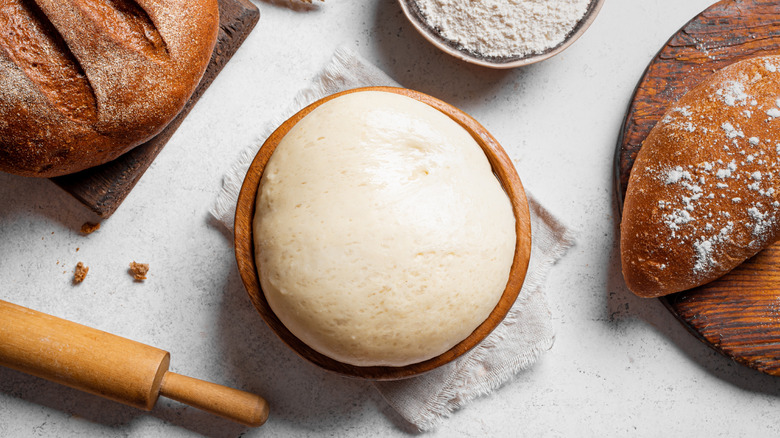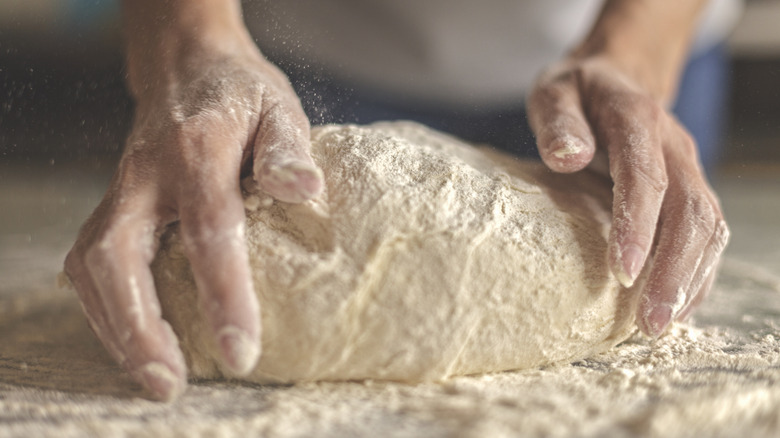Here's Exactly What To Do If You Forgot To Add Yeast To Your Dough
It's happened to everyone. You're traipsing around your kitchen, mixing and measuring ingredients for what you know will be the most irresistible loaf of bread you've ever made. Everything is going smoothly. You feel like Martha Stewart herself. But when you finally let the dough rest, a realization hits you: The unopened yeast packet is still sitting on the counter — or you were focused on finding out how to test your yeast and forgot to put it in. No leavening agent may seem like an insurmountable omission — but don't throw away your baking influencer dreams yet. Food Republic spoke to Sheena Otto, resident baker at Brooklyn's Park Slope Farmers Market, and she insists that all is not lost — in fact, when it comes to how long dough can sit before you add in the missing yeast, she stated, "The limit does not exist."
Yeast eats any sugar in your dough and converts starches into sugar so it can eat those, too — and when it eats, it produces carbon dioxide, alcohol, and organic acid. Those bubbles get trapped in the gluten, causing the dough to rise. So if you forgot to add yeast, it won't be long before you see its effect (or lack thereof).
"You will probably notice after an hour or two that the dough is either not rising at all or only rising a little bit," Otto told us. "You can safely add the yeast and continue with your recipe, restarting your clock to begin when the yeast was added."
Turn forgotten yeast into a slurry to save the day
Sheena Otto stated that you can "spritz the dough with a little bit of water to help incorporate the yeast a bit more easily." In addition, to ease the incorporation, you can also create a slurry by mixing the yeast directly with that little bit of warm water and letting it sit for 5-10 minutes to activate. This is where the difference between active dry and instant yeast comes into play: Dry yeast needs to be activated but instant yeast can go right into the dough.
If you're around the kneading stage, you'll simply mix your slurry or the instant yeast into the existing dough — lay the dough flat, spread the slurry over top, fold it, and knead it just right until the yeast is combined. The slurry may cause your dough to be a little sticky, at which point you can mix in a small amount of flour until the consistency is correct; only add about a tablespoon at a time. Then, as Otto says, start your timer over and let it rise.
The same slurry can be incorporated even after the dough is at the rising stage (or the not-rising stage). You'll have to do some extra kneading to make sure it's mixed in, though, and that potentially leads to a complication. Over-kneading affects the elasticity of the gluten strands and can turn the dough a little tough. The additional kneading may mean that your dough doesn't rise quite as much and the resulting loaf may have a slightly denser crumb. When you're all done, just make sure you know how to store your block of active dry or instant yeast to keep it fresh for your next bake.


